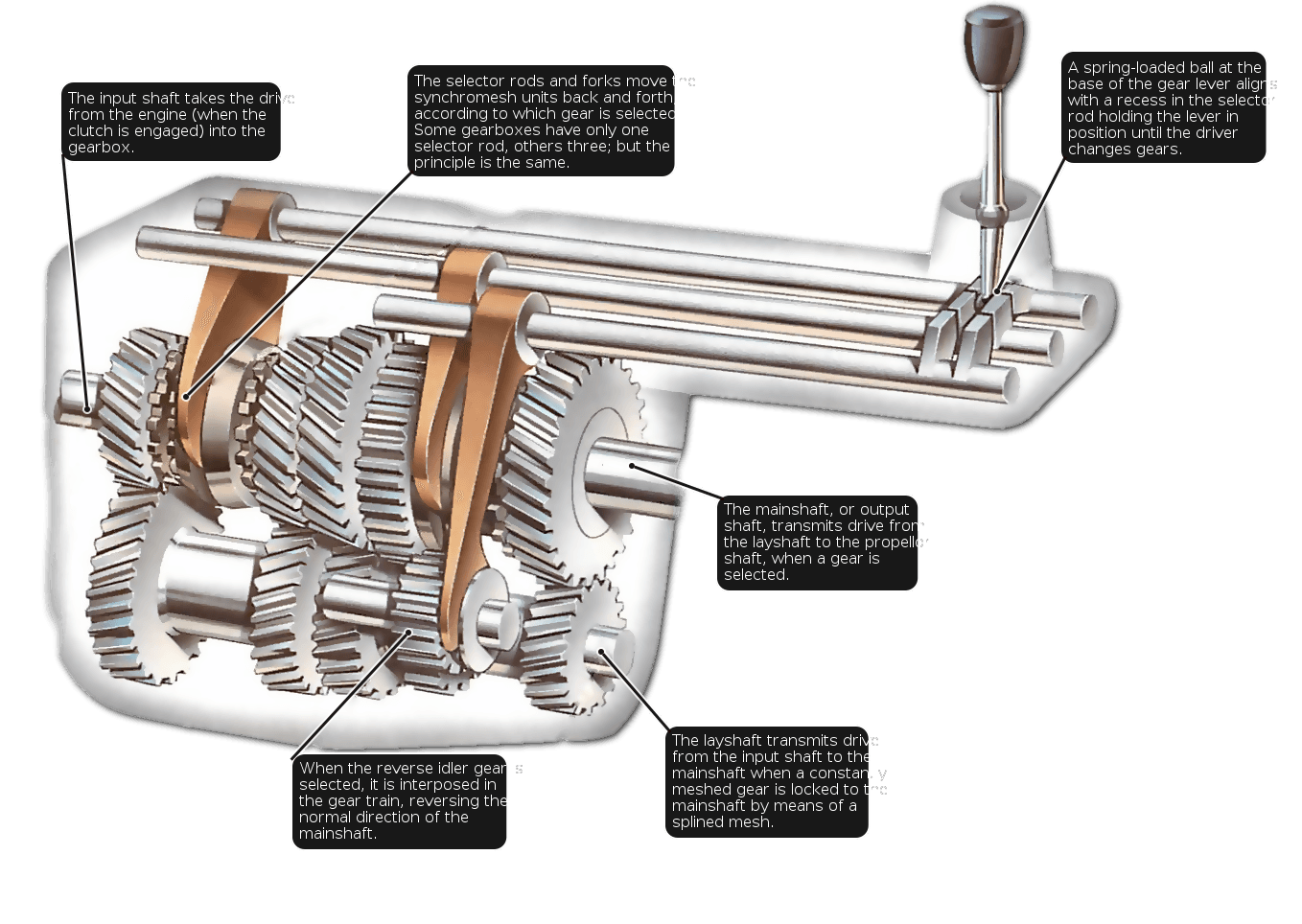Blog

How Gearbox Works
Today we will learn about types gearbox and its components An automobile requires high torque when climbing hills and when starting, even though they are performed at low speeds. On other hand, when running at high speeds on level roads, high torque is not required because of momentum. So requirement of a device is occur, which can change the vehicle’s torque and its speed according to road condition or when the driver need. This device is known as transmission box or gearbox.
You can have any number of gears connected together and they can be in different shapes and sizes. Each time you pass power from one gear wheel to another, you can do one of three things:
Increase speed: If you connect two gears together and the first one has more teeth than the second one (generally that means it's a bigger-sized wheel), the second one has to turn round much faster to keep up. So this arrangement means the second wheel turns faster than the first one but with less force. Looking at our diagram on the right (top), turning the red wheel (with 24 teeth) would make the blue wheel (with 12 teeth) go twice as fast but with half as much force.
Increase force: If the second wheel in a pair of gears has more teeth than the first one (that is, if it's a larger wheel), it turns slower than the first one but with more force. (Turn the blue wheel and the red wheel goes slower but has more force.)
Change direction: When two gears mesh together, the second one always turns in the opposite direction. So if the first one turns clockwise, the second one must turn counterclockwise. You can also use specially shaped gears to make the power of a machine turn through an angle. In a car, for example, the differential (a gearbox in the middle of the rear axle of a rear-wheel drive car) uses a cone-shaped bevel gear to turn the driveshaft's power through 90 degrees and turn the back wheels.
Posted on March 2019,25 // Author: Admin